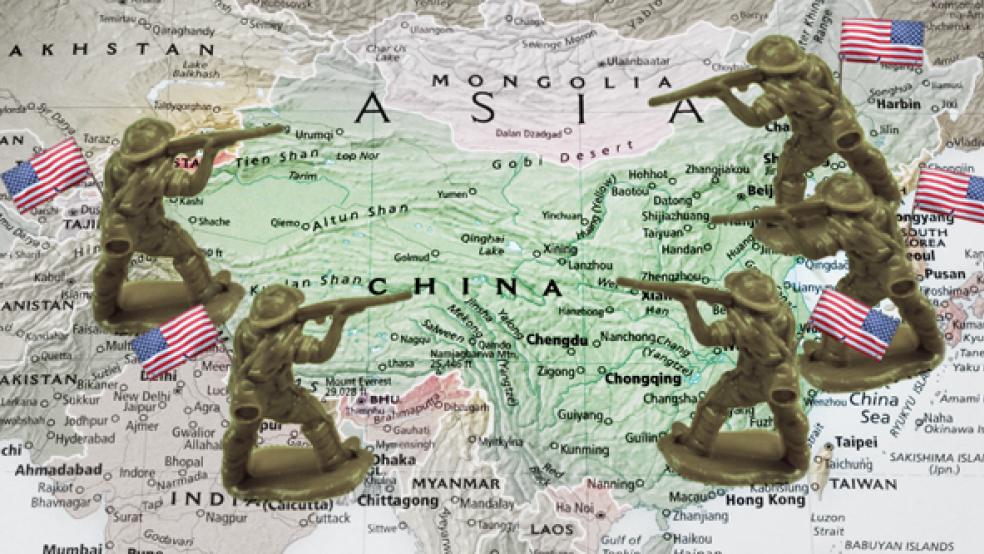At last, Americans can now say, we have broken the habit of preparing for the last war. The strategic defense initiative President Obama unveiled late last week is every bit the departure from previous practice that Obama and Defense Secretary Leon Panetta claimed it to be. But it is half a loaf in the end.
We are no longer getting ready to wage yesterday’s wars, but tomorrow’s, as the administration envisions them, are not realistic. Our defense establishment is still overweight and underprepared for the kind of warfare that a cell phone and a social network could help wage.
“What this document means is that the era of 9/11 is over and we’re not going to wage any more wars of choice or occupation,” said a Washington official. “But Obama could have gone a lot further than he did. Spending money on defense does not equal security.”
What Obama and Panetta outlined at the Pentagon Thursday is a smaller, leaner fighting force with enhanced capabilities in such areas as cyberspace and intelligence. The plan incorporates a 14 percent cut in the number of American troops, to 490,000, and $489 billion in spending cuts over ten years, about 8 percent of the Pentagon’s budget. Of key importance, the Pentagon will drop its longstanding precept that it should be able to fight and win two major wars simultaneously.
Despite the cuts and trimmed ambitions the U.S. defense budget will still be larger than the next ten nations combined. And that is far too much for the 21st century as it is evolving. We are currently building an aircraft carrier that is already several billion dollars over budget and will be obsolete when it is finished. We will spend $125 billion on nuclear weapons over the next decade, some defense analysts say, despite Obama’s promise to “continue to get rid of outdated Cold War-era systems.”
The real reason defense spending is among America’s sacred cows lies not in the Pentagon or among national security experts, but in Congress.
Defense Secretary Panetta asserted that the new strategic outline emerged after close consultation with the Pentagon, including the military’s chiefs of staff, and was developed independently of budgetary considerations. But he could not have been more ambiguous on this point if he tried. “Let me be clear again,” Panetta said. “The department would need to make a strategic shift regardless of the nation's fiscal situation. We are at that point in history. That's the reality of the world we live in. Fiscal crisis has forced us to face the strategic shift that's taking place now.”
Imperial overstretch—otherwise known as the military-industrial complex—has been a reality since the late Cold War years, and it is well that the White House and the defense establishment have finally begun to face it. But as I read it, the Obama administration faced two constraints as it developed its new defense plans. Without them, the president may well have gone further than he has.
One is the presence of defense hawks on Capitol Hill. They were all over Obama as soon as the new initiative was announced. It made for quite a spectacle: There was Obama surrounded by generals and admirals with chests full of medals, and then you had Buck McKeon, chairman of the House armed services committee, saying the policy was a “lead-from-behind strategy for a left-behind America.”
This kind of remark is ridiculous. It suggests that the real reason defense spending is among America’s sacred cows lies not in the Pentagon or among national security experts, but in Congress.
Obama’s second constraint lies in who Washington now identifies as potential enemies. The new focuses of American defense capabilities are the Middle East (Iran) and Asia (China). This is unfortunate in both cases.
One sometimes wants to weep over the obsession America entertains with China as a threatening new power.
Iran is not a friendly nation for reasons anyone with even a shallow sense of history will understand. But the West’s main fixation in the Iranian case is whether or not it intends to develop the ability to build nuclear weapons. We do not know this. And unless we are prepared to enter into World War III, the best way to address the Iranian problem is diplomatically: through the International Atomic Energy Agency and through nations that share our concerns, such as Russia and China.
This brings us to China. One sometimes wants to weep over the obsession America entertains with China as a threatening new power. One understands where it comes from: Mao’s victory in the late-1940s and the “Who lost China?” blame game that ensued in Washington. We are simply going to have to get used to the idea that a nation can be big, and indeed a rival in many respects, but not militarily aggressive.
We do not as yet know many details of the new strategic initiative. These are to be released in coming weeks. But there is worry in Washington already as to how sensibly America will shrink its oversized defense establishment. “The debate of the number of wars is not inherently ridiculous but it comes close,” Anthony H. Cordesman wrote on the web site of the Center for Strategic and International Studies in Washington last week. “What wars? Where? For how long?”
It will be interesting to see how such questions get answered. (Are we thinking of a land war with the People’s Liberation Army, for instance?) The fact is that we are only just beginning to scratch the surface of the Frankenstein we have made of our defense system. But as Mao used to say, a journey of a thousand miles begins with a single step.






